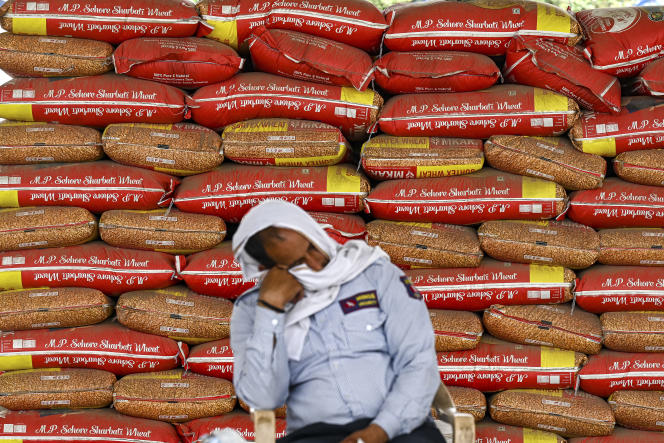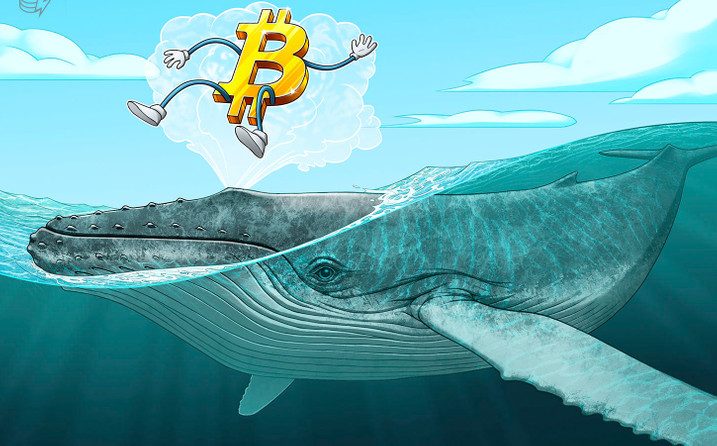On Euronext, the ton of wheat, deliverable in September, ended the week, Friday, June 3, at 378 euros. Two weeks earlier, on May 16, it was trading at an all-time high of 438 euros per tonne. A slight cooling in the price of cereal on the European Stock Exchange, which therefore resulted in a decline of nearly 15% in its value. Same development in Chicago, where it closed the session on Friday at 10.40 dollars (9.70 euros) a bushel, down nearly 20% from its March peak. Despite this pullback, golden grains are still very valuable, with prices up almost 40% since the start of the year, propelled by the invasion of Ukraine on February 24.
The evolution of the price, very volatile, remains dependent on geopolitical movements such as weather reports. Variations amplified by financial speculation. “Discussions launched by [Russian President] Vladimir Putin to create a maritime corridor in the Black Sea to facilitate Ukrainian grain exports have led to a market correction,” said Arthur Portier, from Agritel. The financial players are reselling part of their position, counting on an easier flow of 25 million tonnes of grain, including 7 million tonnes of wheat still stored in Ukraine. »
In mid-May, it was Indian Prime Minister Narendra Modi’s decision to ban the export of wheat that ignited the markets. This, even though he had announced, shortly before, his desire to “feed the world” and to remedy the lack of availability of this cereal following the invasion of Ukraine by Russia. Its brutal about-face had taken the markets on the wrong foot. India, the world’s second largest wheat producer behind China, but not very present on the world trade market, is concerned about ensuring the food security of its population. However, a heat wave has eroded the production potential of the current harvest and inflationary pressures are high.
The key role of Russia
Modi, however, stressed that the export contracts already negotiated would be honored and talks are underway with Egypt to swap wheat for fertilizer. In this tense context, everyone is wondering about the production volumes for the 2022-2023 campaign. For now, all the lights are green in Russia. More than ever, the country led by Vladimir Putin will play a key role in the grain trade this year. Following the blockade decreed on European agricultural products, in 2014, during the annexation of Crimea, a blockade which was never lifted, Russia built its agricultural force and established itself as the first exporter world wheat market, with 18% of volumes.
“Taking into account the high temperatures that have affected the south, we estimate Russian production at 85 million tonnes this year. With high carry-out stocks, we expect availability of 100 million tonnes,” said Portier. It is still necessary to sell the exportable volumes when the economic sanctions imposed by Western countries temper the ardor of the large trading companies. In Europe, the situations are contrasting depending on the country. In France, after an extremely favorable crop start, water stress and high temperatures in May reduced potential.
According to data published by the public institute FranceAgriMer, 67% of wheat crops were in a state considered to be good and very good at the end of May, compared to a rate of 80% in 2021 at the same period. FranceAgriMer has however reassessed the stock upwards, which should remain at the end of the campaign at 3.2 million tonnes. A situation linked to a drop in exports, against a backdrop of high grain prices, which further limit demand, and a drop in Chinese purchases. The main source of concern remains Ukraine, where the war is severely penalizing the production of one of the world’s major granaries.
Even if the forecasts are uncertain in this territory, Agritel estimates the wheat harvest at 22 million tonnes, against 33 million usually. Overall, the Food and Agriculture Organization of the United Nations, which published its estimates of world wheat production for 2022-2023 on Friday, June 3, expects a total of 770.8 million tonnes, in down from the previous season’s 776.8 million tonnes. But it envisages a decline in the use of this cereal in animal feed, which would increase the level of final stock despite an increase in human consumption. However, it specifies that, in the current context, world wheat prices should remain high for at least the next six months.














